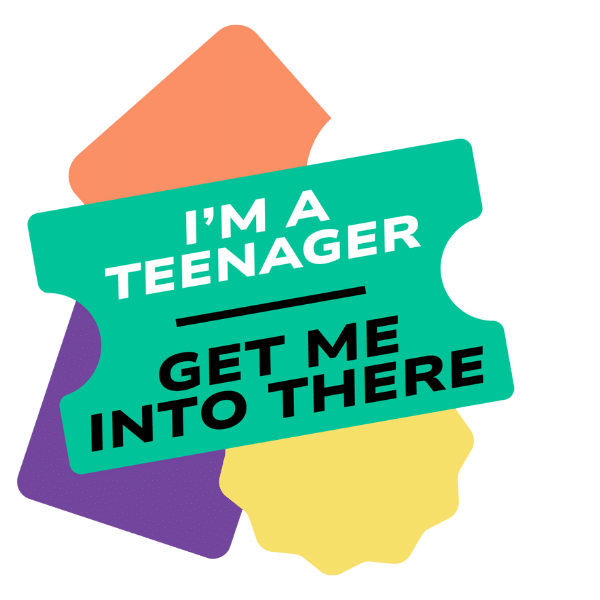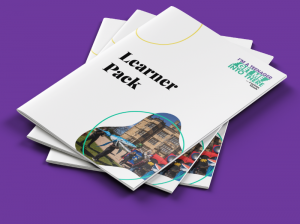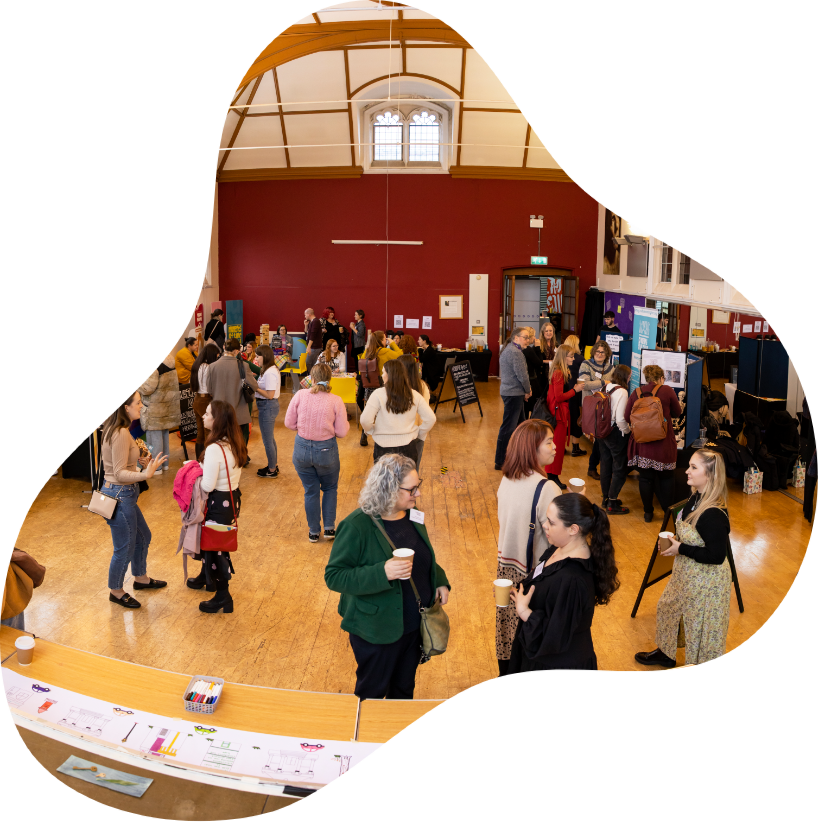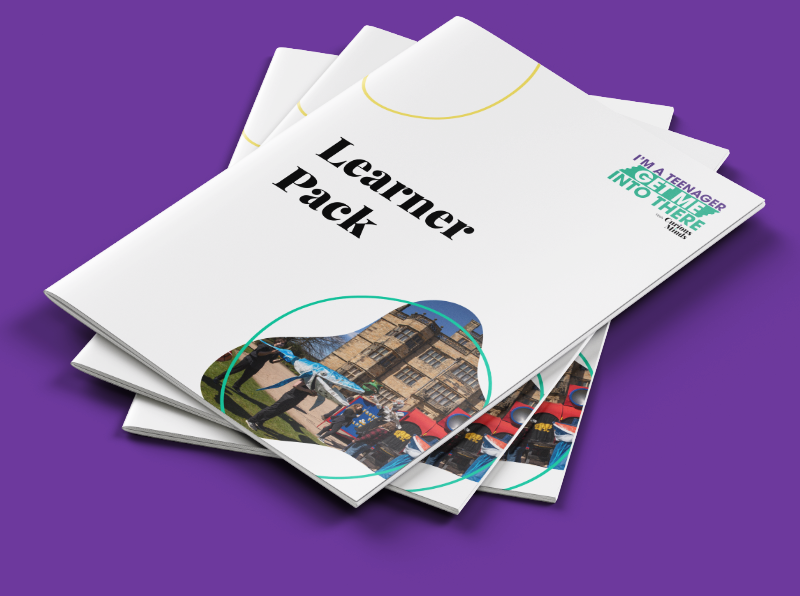
Mapping Your Venue
This final module will draw on what you have learned from this course, so please only do this after you have completed some of the other modules. Here, you will consider some of the barriers young people might experience at your venue that could put them off visiting or working with you. You will think about small, practical changes that are within your power which could make your venue more welcoming and engaging for young people, and for all visitors!
Aims

1.
Use your learning from the course to identify potential visible and invisible barriers in your venue that put young people off

2.
Consider practical, manageable solutions that could make your venue more welcoming to young people

3.
Create an action plan to begin to make these changes a reality
Intro
The previous modules have invited you to remember what it was like to be a young person, think about your experience of interacting with young people, and understand why interactions with young people can be influenced by our preconceptions. We have also suggested that an understanding of brain development can help us understand young people’s behaviour and how a positive experience in your venue can lead to a lasting relationship. We introduced the concept of Red and Blue Zones as a useful tool for thinking about what triggers challenging behaviour and positive engagement with visitors.
At various points we have asked you to think about your own work and experiences. This module asks you to use your learning from across the course to cast a critical eye over your venue, identifying the things that support young people to have a positive experience and those that may be barriers to them feeling welcome, safe and interested.
Activity 1
For this activity, you need to imagine you are a young person visiting your venue for the first time.
Use the person outline template in your learner’s pack to invent this young visitor. You might decide to base them on yourself as a teenager or create someone fictional. Use these questions as a guide, but add any information about them you like:
- What is their name?
- How old are they?
- Where are they from?
- Why are they visiting?
- How did they travel there?
- What are they interested in?
- What do they like doing in their free time?
- What culture/heritage have they experienced at home? Or at school?
- What are their hopes for the future?
Try to write 5-10 things to help bring this character to life – or more if you like!
Get your Learners Pack here

Activity 2
Now imagine this young person is coming to visit your venue. Sketch a map of their route into and around your venue – note which spaces they visit and what they see, who they interact with and anything they do (e.g. buy a ticket, engage with an interactive exhibit, get a drink in the café). You could do this from memory, but if would be even better if you actually walk around to make the sketch!

On the map you have drawn, label anything you think could be a barrier to them having a positive experience. Include anything that has the potential to make someone feel uncomfortable or out of place, confused or uncertain. If you have completed the Red Zone / Blue Zone module – these are things that could lead to someone being in their Red Zone. It might include:
- Cost of entry, placement of donations boxes, how clear concessions are, cost of items in the shop or café
- How rules are displayed and enforced and any unwritten rules or expectations
- Where staff are situated, how formal they appear (think about uniforms or security), how they interact with visitors
- The exhibits/events they see – are they the target audience? Will they see anything they relate to?
- The wording on any information, labels, handouts or programmes that are available – can they understand them?
- How accessible is the venue? If they have any additional needs will these be met? Is it clear how they can ask for support if they need it?
- What about the architecture of the space? Is it grand? Old? Modern? Big? Small? How might they feel if they’ve not been somewhere like it before? Is it clear where they can and can’t go?
If you have time, also label some of the enablers that help your young visitor have a positive experience and make them feel welcome and engaged (e.g a Blue Zone experience).

Get your Learners Pack here
Activity 3
Once you have labelled your map, look at all the barriers you have identified. Using the table in your learners’ pack sort these into three categories:
- Barriers that cannot be changed
- Barriers that would be difficult to change
- Barriers that could be changed by me/colleagues

Barriers that cannot be changed might include the architecture or location of the building. For example, if the front of the building features impressive, grand pillars and statues that might make a new visitor feel a little nervous, it’s unlikely you would want to get rid of them. Or if the venue is on the top of a big hill you are unlikely to move it, even if it is a challenge to get there!
Barriers that would be difficult to change are those that would need the whole organisation, led by senior leaders, to achieve. For example, including elements of youth culture in permanent collections, or changing ticket concessions to allow free entry to under 18s.
Barriers that could be changed by me/colleagues is anything that you could change without lots of additional resource. For example, how staff interact with visitors, the language used in information or handouts, or how rules are communicated and enforced.
Activity 4
You have now identified which barriers you could remove yourself, and which would need additional support to change. Please use this to create an action plan to share with your colleagues and managers. You can begin working on the things you can change yourself straight away and explore how you might initiate change in things that seem out of your control.
In the table in your learners’ pack, list all of the barriers you identified as being things you or colleagues could change. Decide on what actions to take, what resources you will need and who else to involve. Next, decide what you need to do first and when – then do it!
Get your Learners Pack here

To go even further, pick two of the barriers that would be difficult (but possible!) to change. Identify who you could talk to about this and come up with an idea as to what changes could be made with their support.
As a final note:
Look at the actions you are planning to take.

- Would they just benefit young visitors?
- Or would they benefit other visitors too?
We often find that improving things with teenagers in mind can improve everyone’s experience in your venues – you may have found that too!
This module brings us to the end of the I’m a Teenager…Get Me Into There online course. We hope this is just the beginning of your journey to engage better with teenagers!
We’d love to hear about how you’ve found the course, what you’ve learned and what actions you have started to take. If you’d like to talk to us about it please get in touch using the details below!
Please do share all or parts of this course with your colleagues. You can also request a completion certificate, to demonstrate your commitment to making a difference for young people. Simply complete the online form at the link below.
Curious Minds has created a downloadable teaching guide with session plans to enable you to run face to face activities based on these modules with your colleagues, which are a perfect addition to a staff meeting or a volunteer induction.
We can also facilitate professional delivery of an in-depth version of this course, tailored to your needs, to help your organisation better engage with young people. We can deliver this online or in-person as a one or two-day training course. If you would like to talk to us about any of these things, please contact us.
Signposting
You might be interested in these Curious Minds courses and programmes related to working with young people: